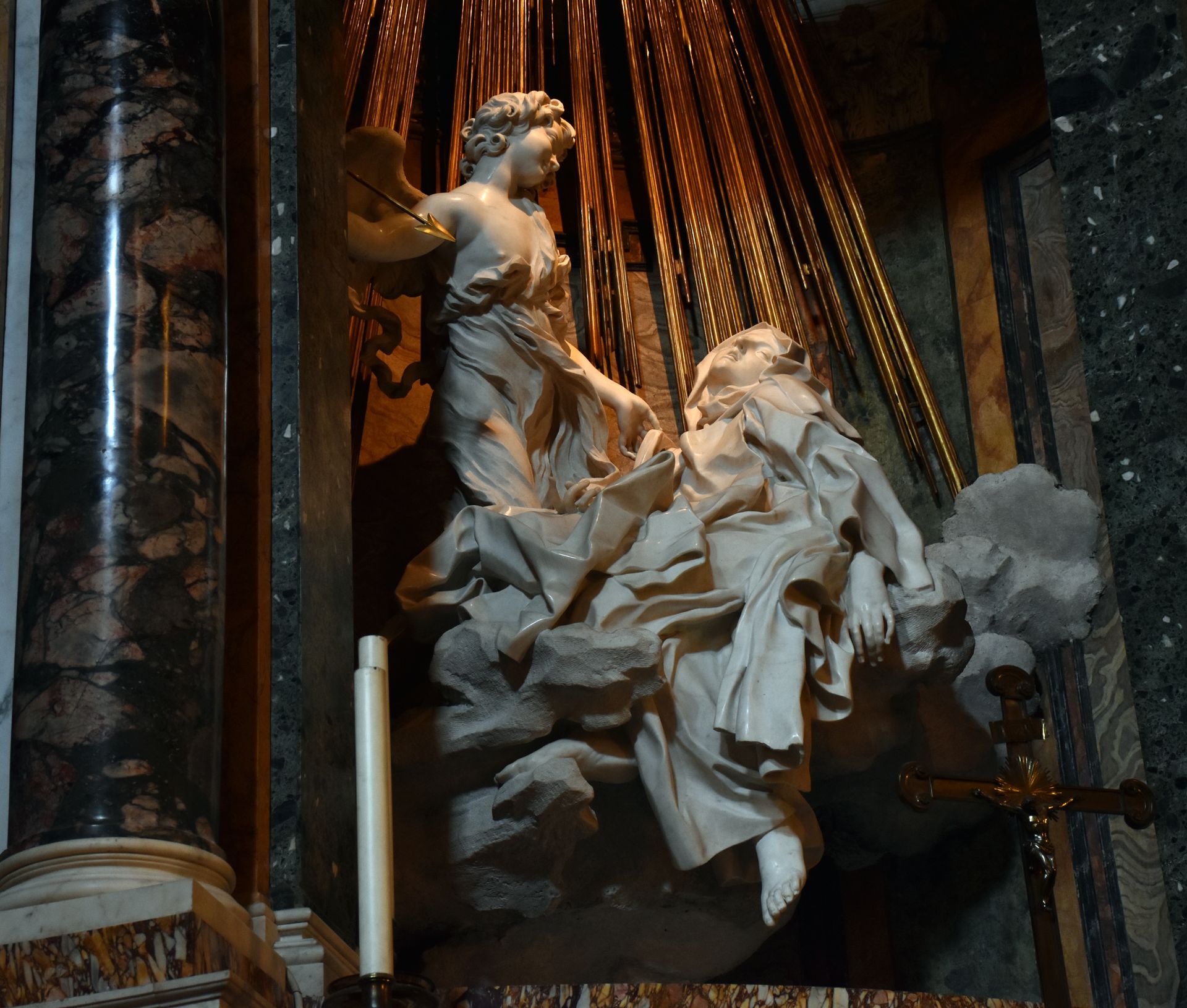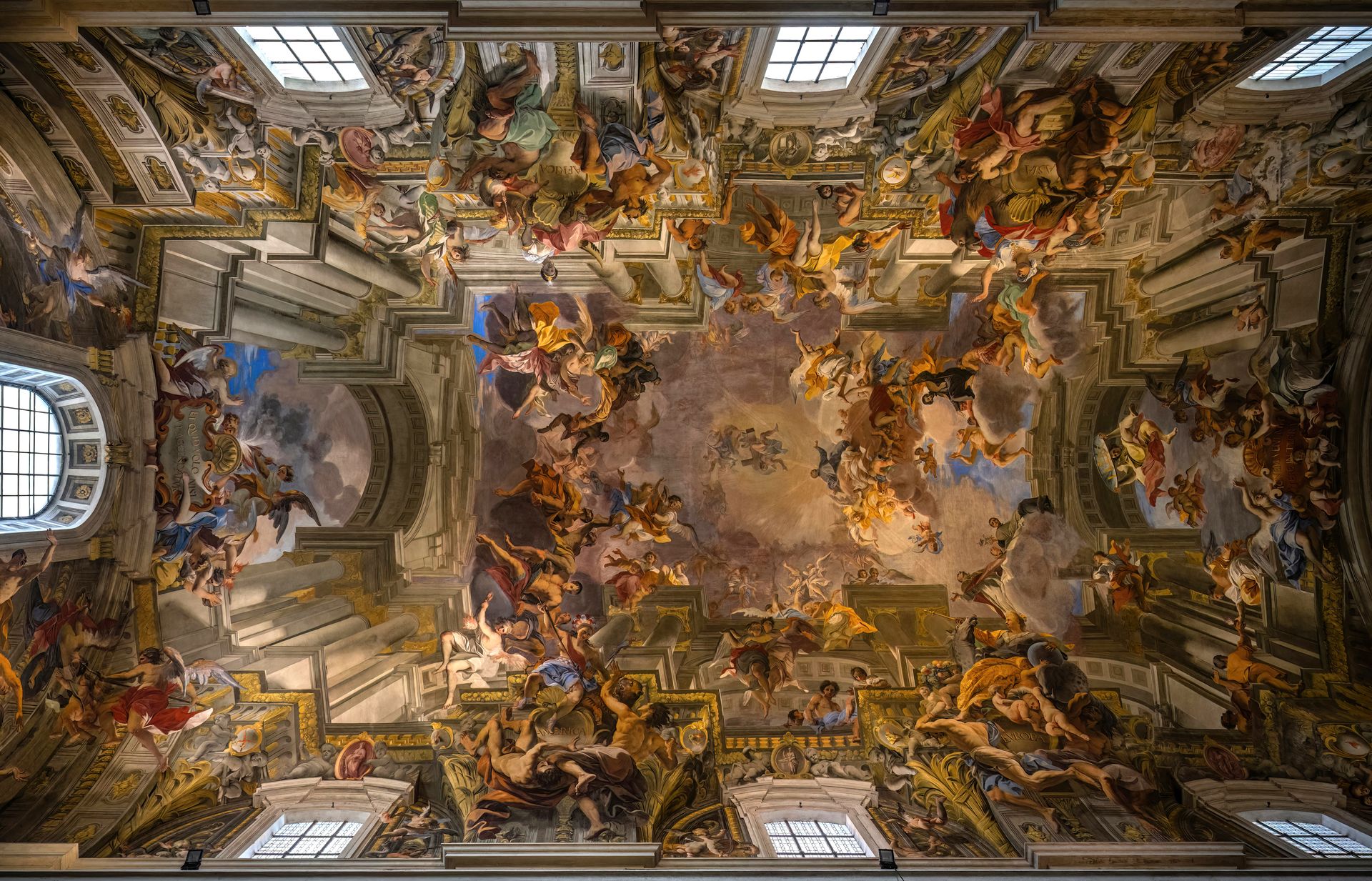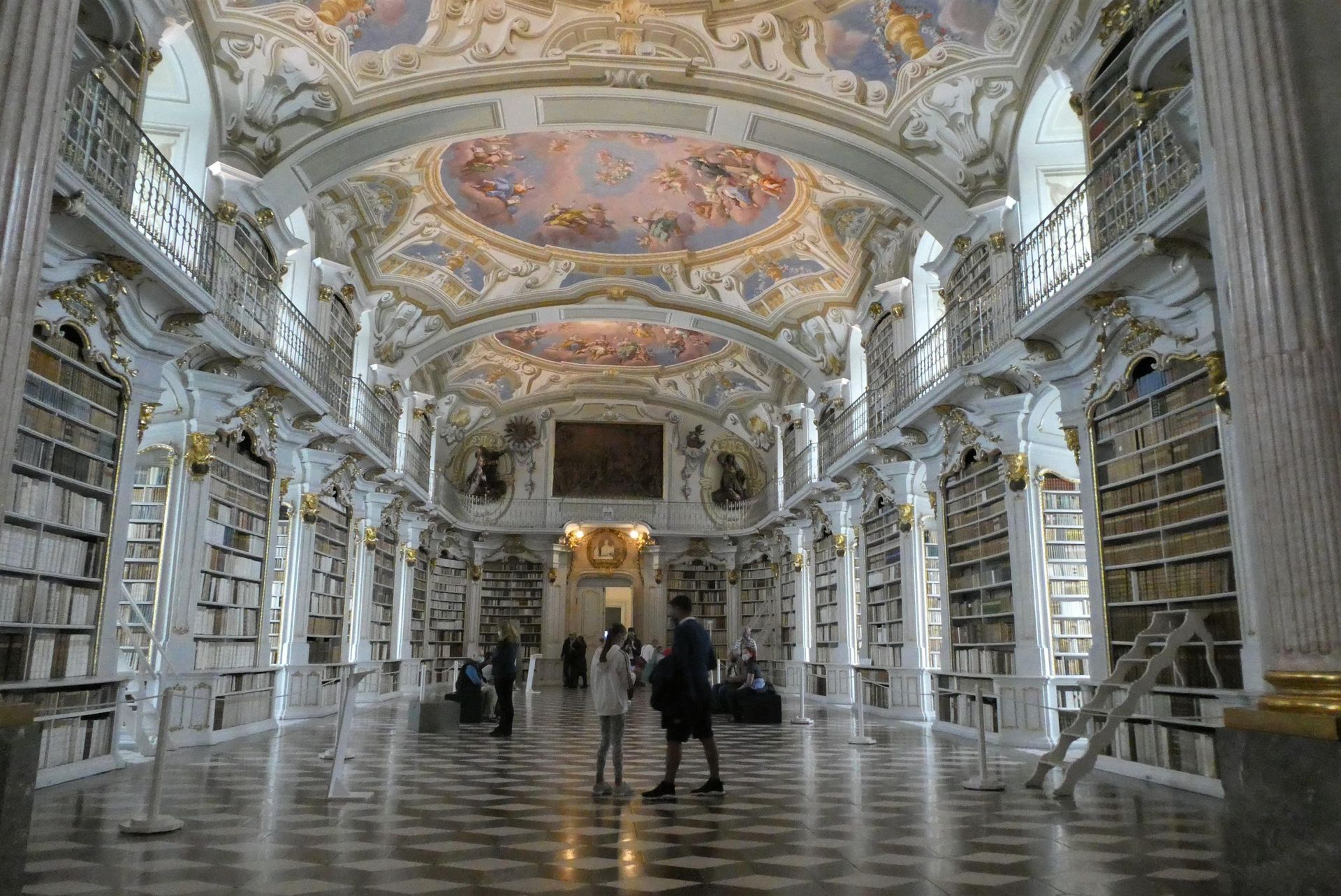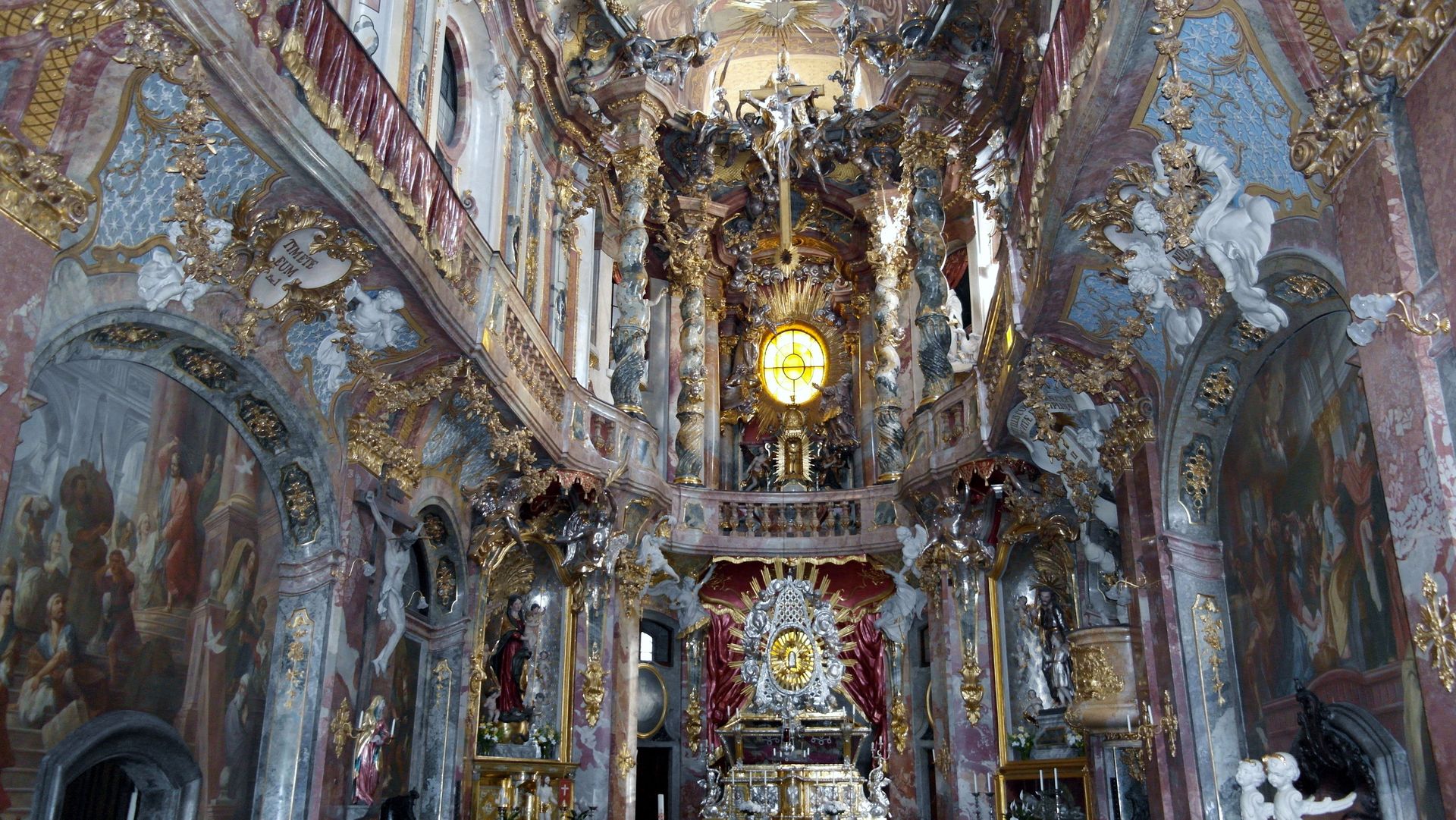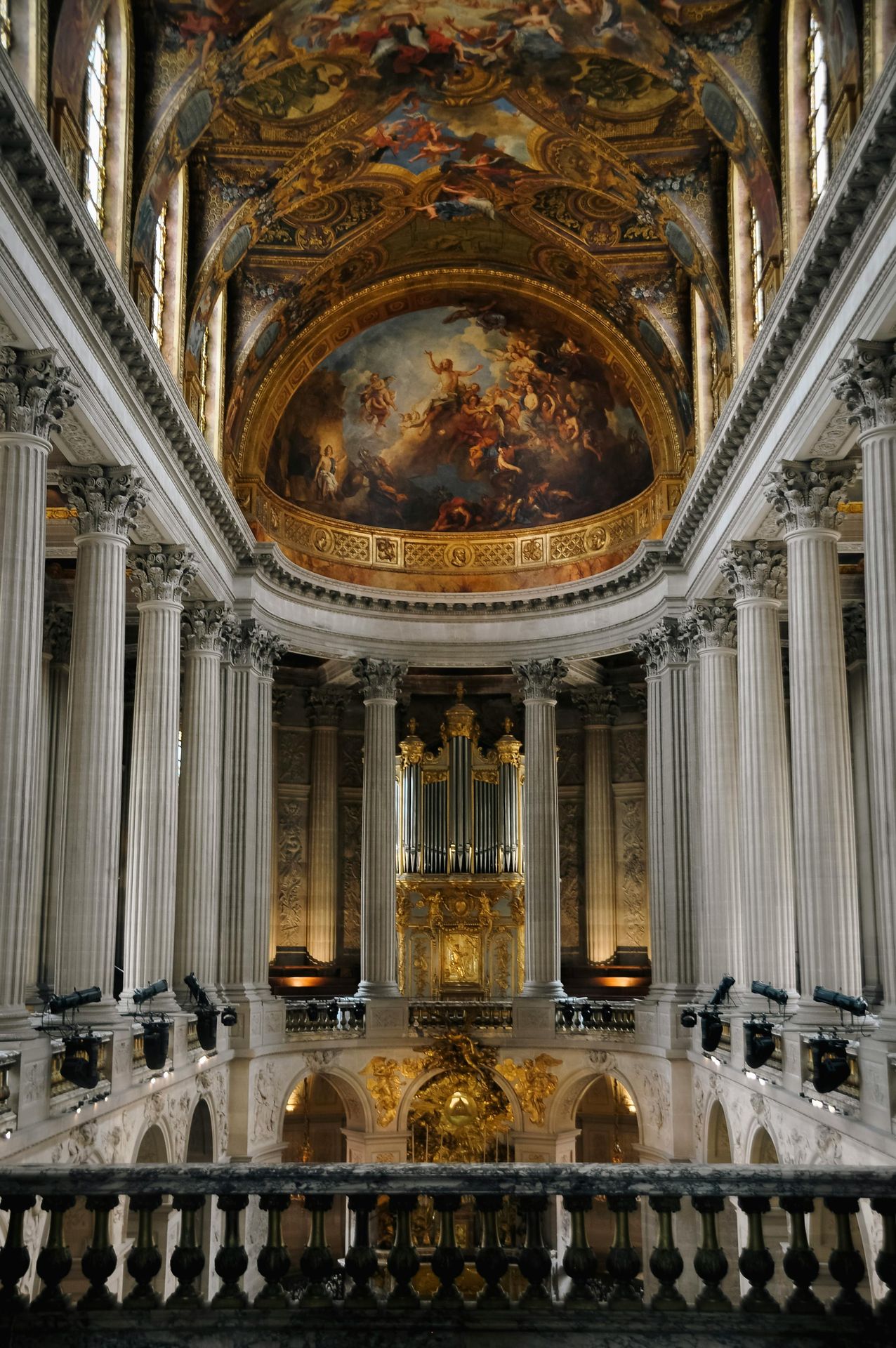⚡ Baroque Art – The Theater of Light
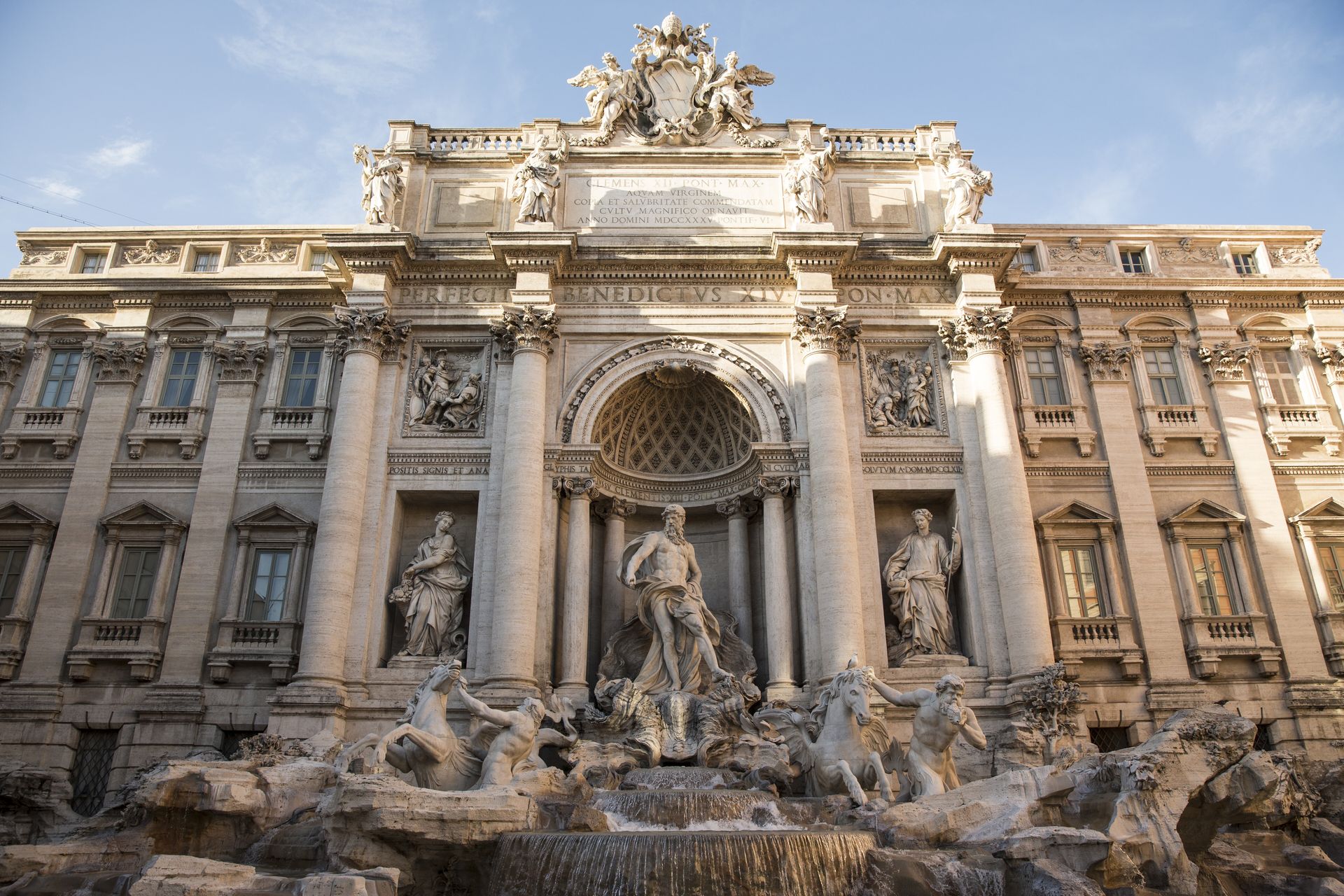
1. Historical Context: Rome, the Counter-Reformation, and the Europe of Courts
Baroque art was born in Rome around 1600, in the wake of the Council of Trent (1545–1563). The Catholic Church sought to move, touch, and persuade: art became an instrument of devotion and persuasion.
Notably, the word baroque comes from the Portuguese barroco (“irregular pearl”). Originally used as a pejorative term to criticize a style judged as excessive and unbalanced, what was once seen as disorder or extravagance is today perceived as inventive freedom and new intensity.
The style quickly spread throughout Europe:
Italy: Rome (Bernini, Borromini), Bologna (Carracci), Naples.
Spain and Catholic Flanders: Rubens, Velázquez, Zurbarán, Murillo.
France: a more classical variant (Poussin, Le Brun), serving the absolute monarchy of Louis XIV at Versailles.
The Protestant Netherlands: a more sober baroque, aimed at the bourgeois market (Rembrandt, Vermeer) — without monumental religious art, but with the same luminous intensity.
The Habsburg Empire / Central Europe: domed churches, spectacular stuccoes and frescoes (Guarini, Fischer von Erlach).
The Americas: Iberian baroque expanded to Mexico, Peru, and Brazil, blending with local traditions.
Indicative chronology: c. 1600–1750, followed by the lighter late phase: the Rococo.
2. Philosophy and worldview
Baroque philosophy was inseparable from its time: an age of religious conflicts, absolute powers, new worlds discovered, and a thirst for intensity.
To move rather than explain: where the Renaissance sought harmony and rational clarity, the Baroque pursued emotional shock. The goal was no longer balance, but impact through intensity.
The gaze as conversion: a ray of light, an outstretched hand, a dramatic gesture became the language of grace. In Caravaggio’s Calling of Saint Matthew, light is not just pictorial effect — it is divine presence altering destiny.
Union of visible and invisible: painted domes opening onto heaven, altarpieces transforming matter into vision, trompe-l’œil erasing the line between reality and illusion.
An aesthetic of excess: the Baroque embraced abundance, surprise, and movement. What critics mocked as barroco (irregular pearl) became a manifesto: beauty born from the unexpected.
Art of power and persuasion: art became a universal language for the Church, royal courts, and cities — every façade, fresco, and public square designed to dazzle and dominate space.
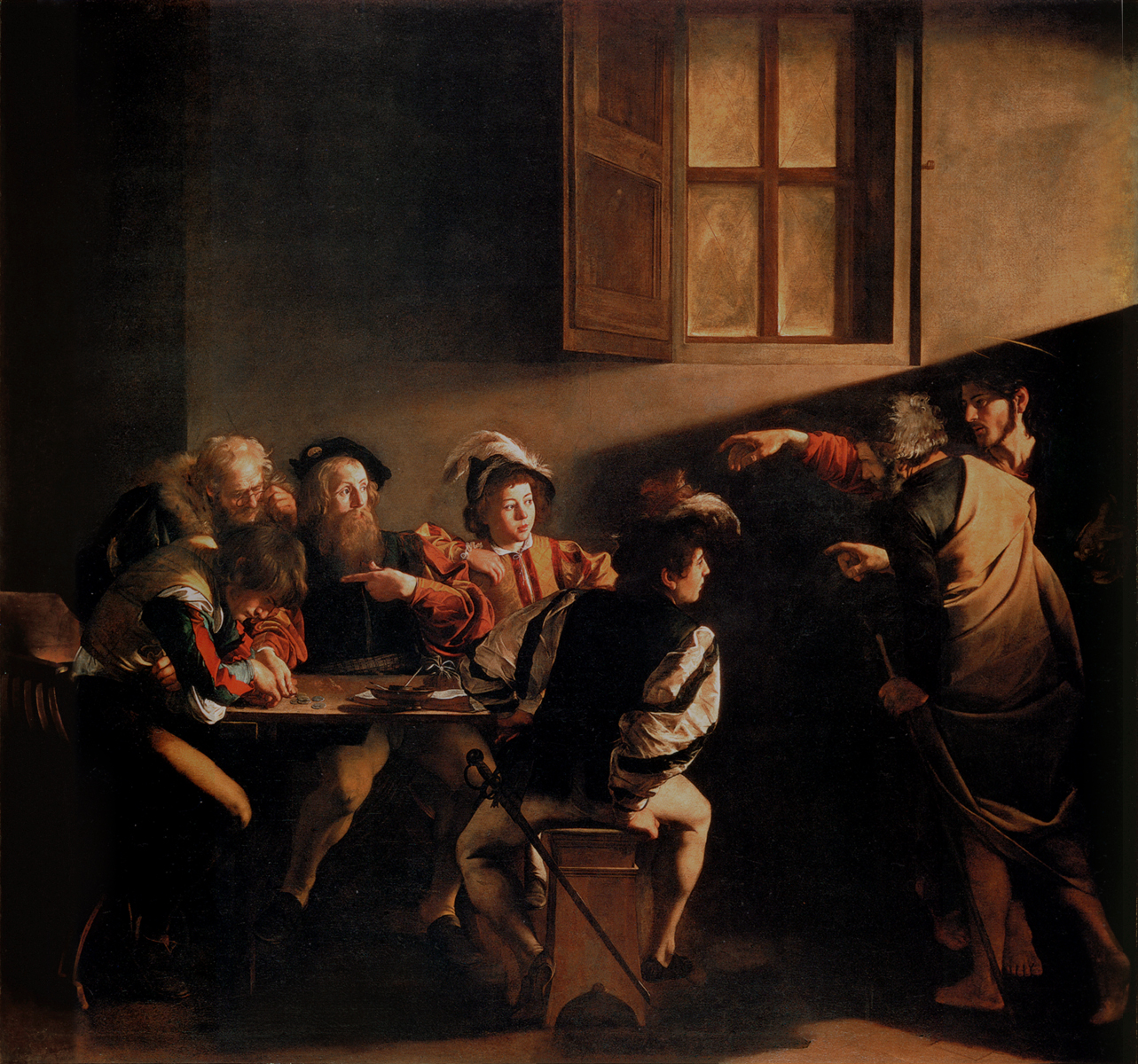
3. Aesthetics and Techniques
Architecture
Dynamic plans: ovals, ellipses, undulating façades, expanding spaces.
Curved vocabulary: twisted “Solomonic” columns, broken pediments, moving cornices.
Urban scenography: theatrical squares, monumental staircases, semicircular colonnades (St. Peter’s Square).
Masters: Bernini (St. Peter’s Baldachin, colonnade; Sant’Andrea al Quirinale), Borromini (San Carlo alle Quattro Fontane, Sant’Ivo alla Sapienza), Guarini (San Lorenzo, Turin), Hardouin-Mansart (Versailles).
Sculpture
Movement and flesh: swirling drapery, twisting bodies, marble textures evoking skin, hair, fabric.
Light as stagecraft: niches, chapel-theaters, golden rays.
Master: Bernini (Apollo and Daphne, Ecstasy of Saint Teresa).
Painting
Chiaroscuro / tenebrism: deep shadow pierced by dramatic light (Caravaggio: Calling of Saint Matthew, Death of the Virgin).
Vibrant color: Rubens (heroic cycles), Le Brun (royal programs), late Titian and Veronese influencing colorism.
Spanish spiritual realism: Velázquez (Las Meninas), Zurbarán, *Murillo.
Dutch masters: Rembrandt (The Night Watch), Vermeer (quiet interiors) — sober in form yet baroque in light and emotional depth.
Illusionistic ceilings (quadratura): Andrea Pozzo, Sant’Ignazio in Rome, where the vault “opens” into infinity.
Decorative Arts
Stucco, gilding, polychrome marbles, lapis, gilded bronze.
Tapestries and mirrors (Hall of Mirrors, Versailles).
Ephemeral art: triumphal arches, festival decorations, the birth of opera as total spectacle.
4. Social Life and Symbolism
The Baroque was more than a style: it was a civilizational atmosphere.
It permeated all levels of society and reshaped man’s relationship with city, power, and the sacred.
Counter-Reformation and Spirituality
Baroque images became tools of catechesis.
Frescoes, altarpieces, and sculptures by Bernini or Rubens struck the eye to convert hearts.
Private chapels richly decorated immersed the soul in a mystical theater.
Monarchical and Political Power
Baroque art embodied prestige: palaces, monumental staircases, scenographic gardens.
At Versailles, Louis XIV turned architecture into a mirror of authority: the Hall of Mirrors was not a corridor but a stage of absolute monarchy.
Official portraits, dynastic cycles (like Rubens’ Medici Cycle) transformed art into propaganda.
The City as Theater
In Rome, Bernini and Borromini sculpted urban space: oval piazzas, fountains, undulating façades.
The baroque city became a continuous spectacle, experienced as a sequence of scenes.
Religious processions, fireworks, and courtly festivities multiplied ephemeral art (triumphal arches, decorated floats).
The Bourgeoisie and the Art Market
In the Netherlands, Baroque took on an intimate, domestic character.
Vermeer’s interiors, Rembrandt’s portraits, Dutch still lifes answered bourgeois demand.
Art was no longer only for princes and the Church: it became a commodity, circulating through workshops and markets.
Symbols and Visual Language
Light: metaphor of divine grace.
Movement: life, energy, spiritual momentum.
Abundance: gilding, fruits, flowers, marbles embody prosperity and power.
Illusion: trompe-l’œil and sky-opening frescoes expressed the idea that man could touch eternity through beauty.
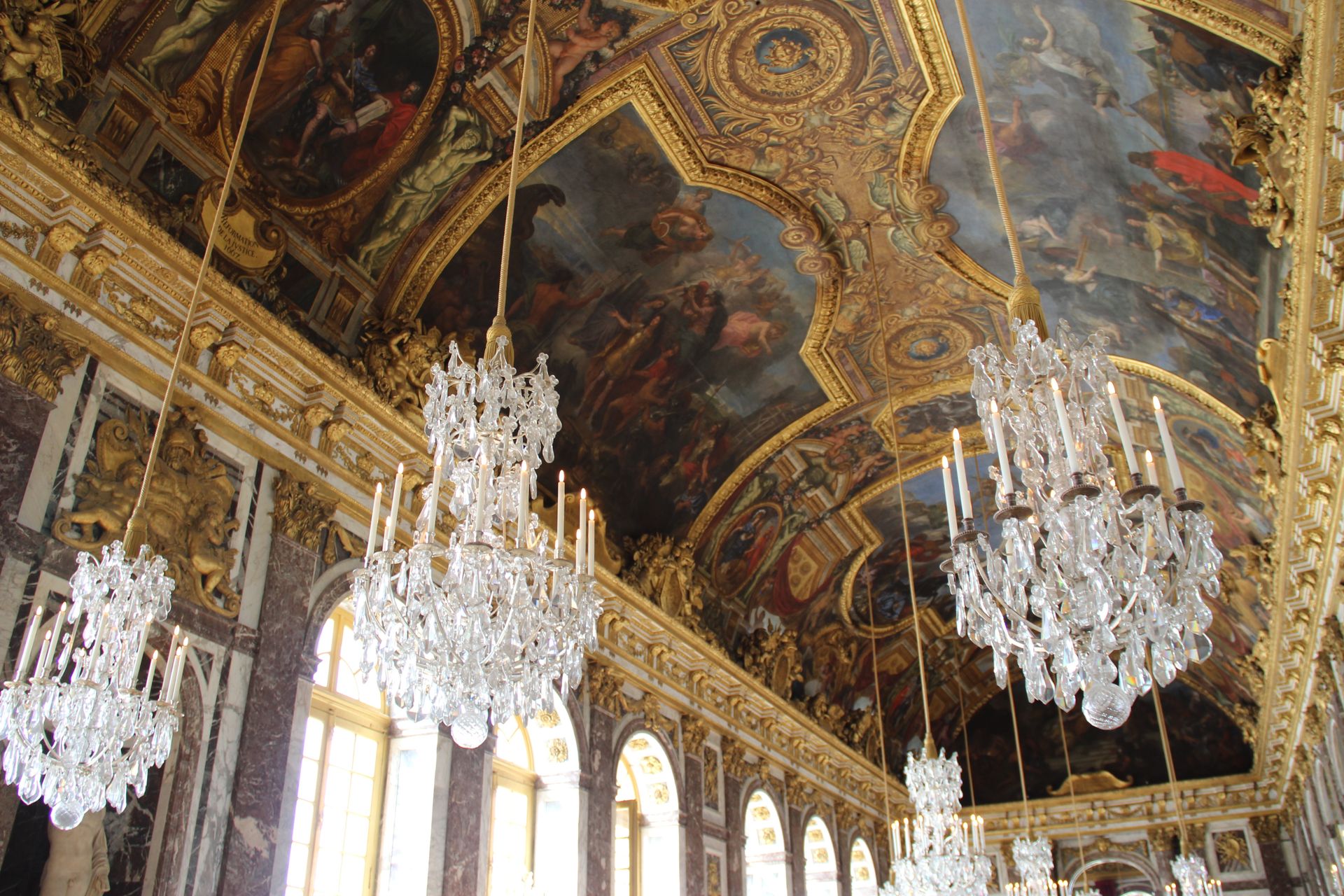
5. Emblematic works
1. The Ecstasy of Saint Teresa – Gian Lorenzo Bernini (1647–1652, Cornaro Chapel, Rome)
Marble becomes flesh, light, and divine breath. Saint Teresa, pierced by the angel’s arrow, wavers between pain and ecstasy. Swirling drapery, luminous rays, and hidden windows create a stage where sculpture becomes theater. Bernini embodied the quintessence of the Baroque: to move the soul through emotion.
2. The Triumph of Saint Ignatius – Andrea Pozzo (1685–1694, Sant’Ignazio, Rome)
The ceiling opens in dizzying illusion: painted columns extend real ones, heaven ascends without end, missionaries are sent across the world. Celestial light engulfs the viewer. Baroque at its peak: erasing the boundary between real and imaginary to make art a total spiritual experience.
3. Library of Admont Abbey – Josef Hueber & Bartolomeo Altomonte (1776, Austria)
The world’s largest monastic library, 70 meters long, is a sanctuary of light and knowledge. White columns, delicate gilding, frescoes celebrating human wisdom: all designed to uplift the spirit. Here, Baroque celebrated not princely power but the grandeur of knowledge itself.
4. Asamkirche – Asam Brothers (1733–1746, Munich)
An intimate, flamboyant church, squeezed into a narrow street but opening onto infinity. Its interior overflows with stucco, gilding, and illusionistic frescoes. Here, Baroque became a personal spiritual theater, a Rococo jewel where imagination transcended space.
5. Royal Chapel of Versailles – Hardouin-Mansart & Robert de Cotte (1699–1710, France)
A masterpiece uniting royal magnificence and spiritual grandeur. Corinthian columns, painted vaults, monumental organ, and gleaming gold create a solemn, luminous atmosphere. The chapel embodies French Baroque: less undulating than Italian, but majestic and grand, serving both God and King.
6. Heritage and Legacy
Baroque left an indelible mark on Europe.
Born in service of the Church and princes, it transformed cities, palaces, and imaginations, becoming a universal language of magnificence.
Catholic Europe: in Italy, Spain, Austria, Bavaria, Baroque triumphed as the art of faith and royal power.
Versailles and beyond: in France, Louis XIV made it a political instrument, imitated from Vienna to St. Petersburg.
Global expansion: missionaries and artists carried Baroque to the New World — Mexico, Peru, Brazil — blending with local traditions.
Transitions: from Baroque came Rococo (more intimate, refined) and Neoclassicism (return to classical rigor), yet its influence endured.
Neo-Baroque: in the 19th century, architects such as Charles Garnier (Paris Opera) revived its theatrical splendor, proof that the Baroque continued to captivate later ages.
Baroque was not a parenthesis: it was a matrix of modernity. By embracing excess, illusion, and emotion, it paved the way for all art that seeks to speak directly to the senses and the soul.
7. Imperion – Heir of the Baroque
Imperion does not copy the Baroque: it carries forward its force.
What we retain from this era is not ornament for ornament’s sake, but a conviction: beauty is a language that uplifts and moves the soul.
Like Bernini, we believe matter can be pierced by light.
Like Pozzo, we know illusion can become truth when it dazzles the spirit.
Like Admont, we see in the union of knowledge and aesthetics a path to wisdom.
Like the builders of Versailles, we hold that grandeur resides in harmony and solemnity.
Imperion draws on these symbols, not as religious belief, but as universal aesthetic and spiritual values: light, movement, majesty, vitality.
Each Imperion creation carries something of the Baroque: a brilliance, an intensity, a will to transcend the visible and touch the invisible.
✨ To be heir to the Baroque is to affirm that beauty is not a luxury but a message — one that still today can move, unite, and elevate.

